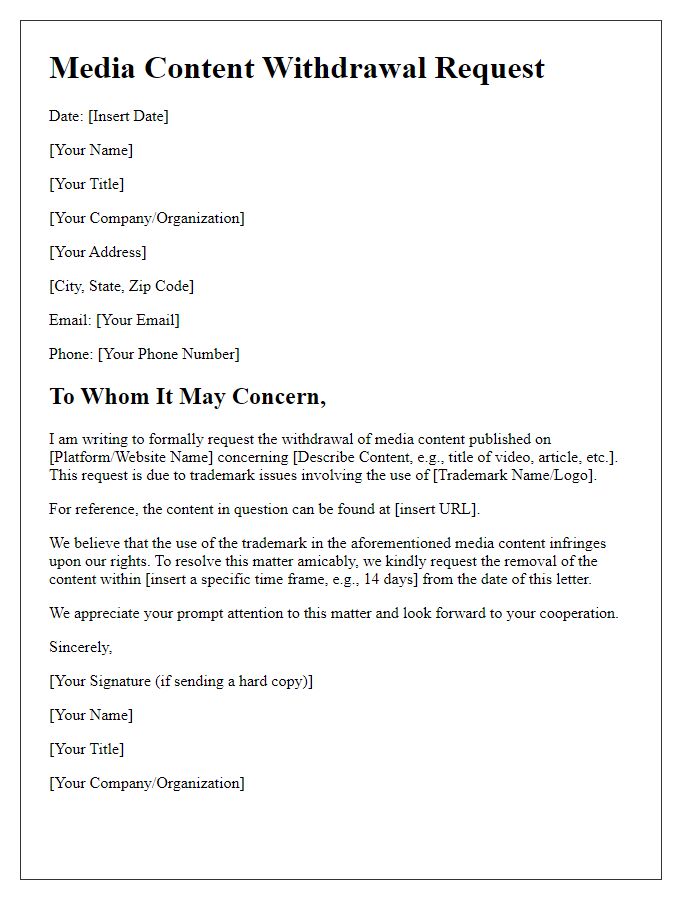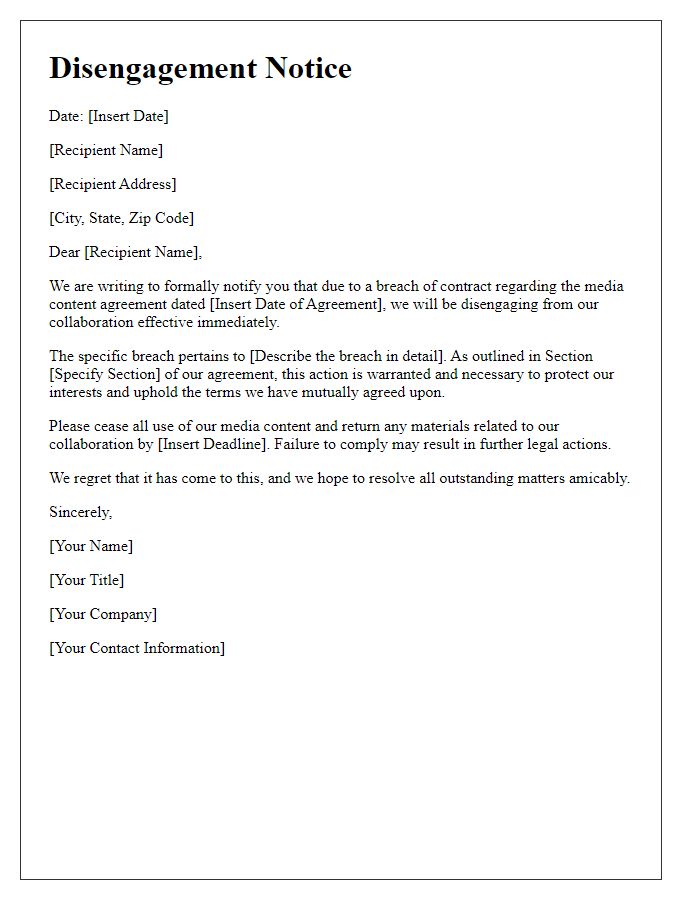Are you looking to withdraw your media content but aren't sure where to start? Crafting a clear and concise letter can make all the difference in ensuring your request is processed smoothly. In this article, we'll provide you with a handy template tailored specifically for media content withdrawal requests. Keep reading to discover the essential elements you need to include for a successful withdrawal!

Legal Rights and Authorizations
Media content withdrawal requests serve as formal notifications to revoke permission to use or distribute specific media material, often invoking legal rights associated with intellectual property. For instance, individuals or organizations may seek the removal of content such as photographs, videos, or written articles that were previously authorized for use, citing copyright laws under the U.S. Copyright Act. The requests might include detailed information about the specific content, such as the title, publication date, and platform where the material appears, ensuring clarity in the communication process. Proper authorization must reflect compliance with legal standards, such as those outlined by the Digital Millennium Copyright Act (DMCA), which allows content creators to protect their works effectively. Legal counsel may guide the drafting of the request, emphasizing the importance of clearly defining the rights being exercised to avoid potential disputes.
Contact Information and Credentials
Contact information for media content withdrawal requests is crucial for ensuring effective communication. This includes the individual's full name (first name, last name), phone number (preferably a mobile line for immediate response), email address (preferably a professional domain), and mailing address (street, city, state, zip code). Credentials may involve references (works published, positions held) and identification (government-issued ID, professional memberships) to validate the requester's identity and authority regarding the content in question. Clear documentation helps streamline the withdrawal process, reduces miscommunication, and establishes accountability in handling sensitive media content.
Specific Content Identification
Media content withdrawal requests often require clear identification of specific content for effective processing. Important details include the title of the media (for example, "The Great Adventure"), the publication or platform name (such as "YouTube" or "Spotify"), the creator or artist name (like "Jane Doe" or "XYZ Productions"), and the upload date (noting the exact date, such as "March 15, 2022"). Additionally, precise timestamps (e.g., "1:23 - 2:45") highlight the sections of content in question. It is crucial to include any relevant identifiers, such as URLs or unique content ID numbers, to ensure prompt identification of the content intended for withdrawal.
Reason for Withdrawal Request
Content withdrawal requests often stem from copyright infringement concerns, privacy violations, or inaccuracies in reported information. Copyright infringement occurs when original works, such as artwork or photography, are used without proper authorization, violating intellectual property laws. Privacy violations may arise when personal information is shared without consent, potentially leading to legal repercussions. Inaccuracies, whether in news reporting or social media posts, can mislead audiences, damage reputations, or violate regulations. These reasons emphasize the importance of ethical media practices and maintaining trust with audiences.
Deadline for Compliance and Next Steps
Media content withdrawal requests must be addressed promptly, particularly for sensitive materials such as copyrighted images, videos, or articles. Stakeholders typically provide a compliance deadline, often 14 days (or two weeks) from the submission date, to ensure a swift response. Failure to adhere to this timeline may result in legal action or continued dissemination of the content. Next steps involve compiling necessary documents, such as the original content source and any relevant agreements, to substantiate the withdrawal claim. Clear communication channels should be established with the entity overseeing the content, whether it's a social media platform (e.g., Instagram, Facebook) or a news outlet, to facilitate timely resolution and prevent further issues.
Letter Template For Media Content Withdrawal Requests Samples
Letter template of media content removal request for copyright infringement.

Letter template of media content deletion request for privacy violation.

Letter template of media content withdrawal submission for trademark issues.

Letter template of media content removal petition for misleading representation.

Letter template of media content disengagement notice for breach of contract.

Letter template of media content termination notice for unauthorized usage.








Comments